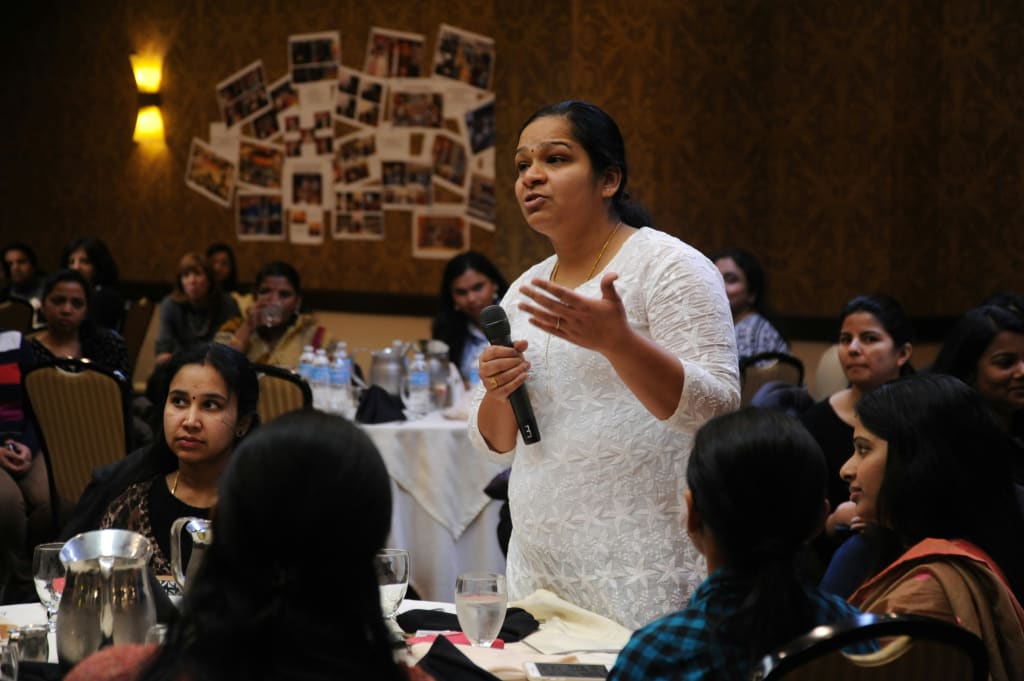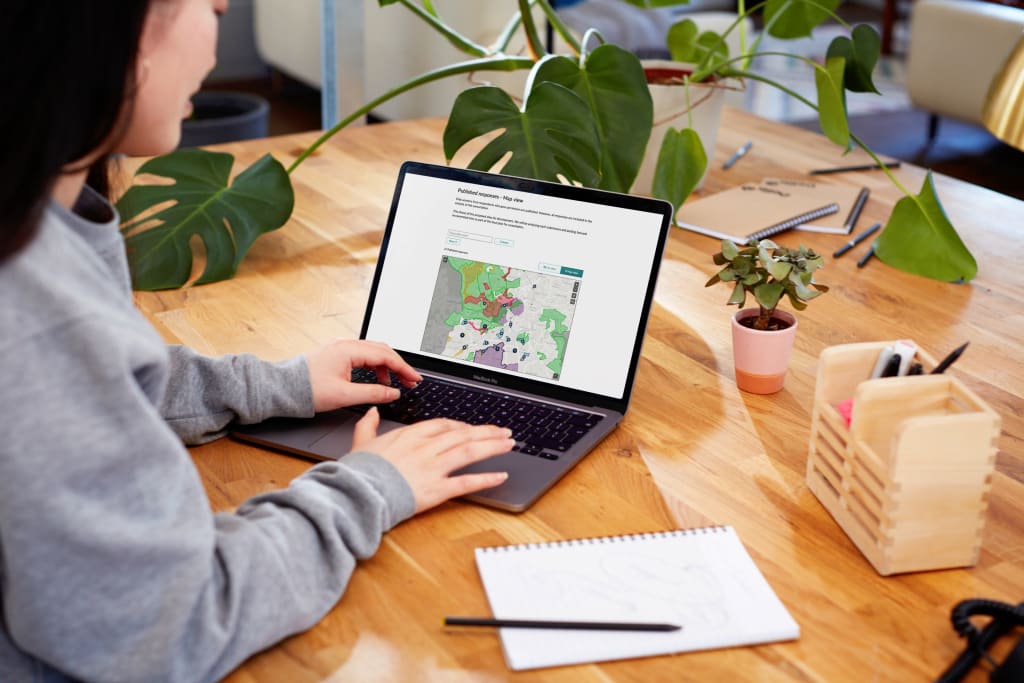
No matter the consultation, engaging stakeholders is a necessary and critical part of the process and its success. Understanding who your stakeholders are—and how to effectively involve them—ensures a more informed, transparent, and inclusive decision-making process.
Types of Stakeholders

A stakeholder is any individual, group, or organisation that has an interest in a particular project, plan, or policy. To define the key stakeholders that need to be involved in the process, the body running the consultation will undergo stakeholder mapping
Commonly, stakeholders are those who have the resources needed to make it happen, or have decision-making authority in a specific area. Power and resources could be material, like an infrastructure support service. Or these resources may be less tangible, like a community leader or local councillor who can encourage public support for a project.
All stakeholders play a crucial role in whether projects or plans get off the ground. Whether through providing input, offering or withholding resources, or otherwise influencing outcomes through their support or opposition.
External and internal stakeholders can be broadly categorised by their relationship to a project or plan::
- Individuals who directly benefit from or are affected by the project.
- Entities responsible for delivering services related to the project.
- Regulators that ensure compliance with laws and regulations.
- Decision-Makers, or those in positions of authority who can approve, modify, or reject the project.
- Individuals and organisations based in a specific location, such as within a specific city council area.
Effective stakeholder engagement means developing methods which can engage all of the above.The diverse backgrounds, needs and desired outcomes of these stakeholder groups can make this particularly challenging.
What is Stakeholder Engagement?

Stakeholder engagement involves identifying who your stakeholders are, understanding their perspectives, and determining the most effective ways to involve them in your project. This is known as stakeholder mapping.
Managing stakeholder relationships means considering their diverse interests and values and addressing them throughout the consultation process. Engaging the right people at the right time can significantly impact a project or policy’s chance of being implemented successfully.
Stakeholder engagement is key to policy-making and project planning, as it allows potential challenges and opportunities to be identified early. When executed well, it helps reduce risks such as misinformation, disengagement, dissatisfaction, and resistance to change. It also can generate greater levels of “buy in” from key stakeholders.
The Importance of Stakeholders in Public Consultation Planning

Stakeholders play a crucial role in shaping the success of public consultation planning. Their engagement with the consultation process is vital to ensuring policies and projects meet the needs of the community while gaining essential support for implementation.
Public consultations are most effective when they reflect as many points of view as are relevant to a plan or project. This means that all key stakeholders should be involved, ensuring that the consultation process captures a diverse range of interests and concerns. Without broad participation, consultations risk overlooking critical perspectives that could have long-term implications for a policy or project.
For consultations to adhere to Arnstein’s ladder of participation, they must be genuinely reflective of all interests in a project, especially from the local community. A consultation that only engages select groups or prioritises only certain viewpoints fails to meet the criteria of meaningful participation, potentially leading to disengagement or opposition.
Public consultations are also more likely to flag potential issues or identify opportunities when all stakeholders are not only present but genuinely engaged and invested in the process.
A well-run consultation allows for the early identification of challenges, as well as potential opportunities that may not otherwise have been obvious to policy-makers and planners.
How to Plan a Stakeholder Engagement Strategy in 6 Steps

1. Identify Your Stakeholders
Start by identifying everyone who has an ‘interest in’ or ‘influence over’ your project. This may include:
- Affected members of the public
- Local businesses
- Landowners
- Elected representatives and community leaders
- Service providers
- Regulatory bodies
Some stakeholders will naturally be more engaged due to their direct involvement, while others will need to be encouraged to participate.
2. Assess Stakeholder Influence and Interest
As part of the stakeholder mapping process, you need to performa a stakeholder analysis to understand their interest in your project. A stakeholder who can directly impact project decisions requires a different engagement approach than one with minimal involvement.
A useful approach is to evaluate influence on a scale from very high to very low and interest from high to low:
- High influence, high interest stakeholders: Key decision-makers who need consistent updates and involvement.
- High influence, low interest stakeholders: Powerful stakeholders who should be kept informed but may not require frequent details.
- Low influence, high interest stakeholders: Individuals eager for project details but lacking decision-making power.
- Low influence, low interest stakeholders: Stakeholders who require minimal engagement but should not be overlooked entirely.

3. Tailor Your Communication Plan
Once stakeholder priorities are identified, it’s important to create a structured communication plan that ensures clarity, transparency, and consistent engagement throughout the project.
Start by deciding what communication channels will be used to keep stakeholders informed. Many public consultations now handle stakeholder management through digital engagement platforms. These offer a streamlined approach for communications, making it easy to organise updates, analyse responses thoroughly, and maintain a professional atmosphere throughout the process. Digital govtech platforms can also prevent details from being lost and improve stakeholder engagement opportunities being missed.
It is often necessary for different stakeholders to receive different methods of engagement. For example, community leaders may need to be engaged through personal outreach, while general public notices about consultations can be posted online to maximise reach.
High-interest, high-influence stakeholders may require more direct and frequent communication, such as personal emails or dedicated meetings.
Tailoring your communication plan to the specific needs of each stakeholder group will help develop the relationship stakeholders have with the consultation process or project.
4. Build Relationships With Your Stakeholders
Building and maintaining strong relationships with your stakeholders is essential for a successful consultation. Regular communication is key, ensuring that stakeholders stay informed, engaged, and feel valued throughout the process. Periodic feedback through a digital consultation platform for example, can help manage stakeholder expectations and keep them engaged.
Beyond routine communication, more interactive methods create opportunities for stakeholders to voice their perspectives, share concerns, and collaborate on solutions. Examples of these include:
- Stakeholder workshops
- Roundtable discussions
- Q&A sessions
- Webinars
- Focus groups
- Community forums
Facilitating open communication is critical—not just between policy-makers and stakeholders but also among the stakeholders themselves where relevant. By creating spaces for dialogue, you can build trust and encourage constructive discussions that contribute to a more comprehensive consultation outcome.
A positive relationship and a well-organised consultation process also help ensure that stakeholders remain engaged in long-term or recurring consultations. When stakeholders see that their input is genuinely considered and valued, they are more likely to stay involved with future projects. This strengthens ongoing collaboration and helps build a network of engaged stakeholders who are invested in the process and its outcomes.
5. Collect and Analyse Feedback
Engagement isn’t just about giving information – it is also about listening. By regularly seeking stakeholder feedback to understand concerns, identify potential roadblocks, and improve your engagement approach, the consultation process can become more efficient over time.
Online surveys, sentiment analysis tools, and interactive forums can facilitate this process. Many digital engagement platforms also provide analytics that track stakeholder participation, response rates, and engagement levels, allowing you to refine your stakeholder engagement matrix in a data-driven manner.
6. Ensure Long-Term Stakeholder Engagement
Stakeholder engagement plans shouldn’t end when the immediate project concludes. Maintaining relationships beyond the consultation phase can create long-term support and improve engagement with future consultations.
Establishing long-term stakeholder engagement may involve:
- Establishing ongoing communication such as newsletters, community forums, or advisory groups that keep stakeholders engaged beyond the project’s completion.
- Recognising stakeholder participation through public thank-yous, case studies, or follow-up reports that highlight their input and its impact.
- Creating an online database of stakeholders to streamline future consultations and ensure valuable relationships are nurtured over time.
- Involving stakeholders in upcoming initiatives by inviting them to future discussions, policy reviews, or engagement opportunities.
By nurturing long-term relationships, policy-makers build a network of engaged stakeholders who are more likely to support and participate in future projects.
Best Practices for Improving Stakeholder Engagement

Now you know how to establish a stakeholder engagement strategy, here are some tips on how to make sure your strategy remains effective.
Diversify Communication Channels
Different stakeholders prefer different ways of receiving information. Using a mix of communication methods—such as in-person meetings, emails, social media, webinars, and online surveys—ensures broad participation and inclusivity. Flexibility is key.
Use Digital Engagement Tools
Digital engagement platforms provide a structured and accessible way to manage public consultations. These tools allow organisations to design, publish, and promote consultations in a way that is transparent and easy to access.
Features such as built-in publishing tools, response analysis, and reporting functions help organizations gather meaningful insights. They also make it easier to give feedback to participants.
By using digital platforms that support consultation planning and data analysis, organisations can enhance participation and engagement from stakeholders.
Be Transparent About Objectives and Decision-Making
Clarity on goals, processes, and expected outcomes builds stakeholder trust. Clearly outlining how decisions will be made, what factors are considered, and how stakeholder input influences the final outcome prevents misunderstandings and increases confidence in the process.
Manage Challenges and Resolve Conflicts Proactively
Differing opinions, competing interests, and unforeseen challenges can disrupt a given project or plan, or even the consultation process itself.
To prevent this, it’s important to recognise potential conflicts early by paying attention to recurring concerns. Open and respectful communication is key, as stakeholders are more likely to remain engaged when they feel heard.
A stakeholder engagement strategy should approach disagreements with transparency by clearly explaining decisions, acknowledging concerns, and demonstrating how input was considered.
How Citizen Space Supported the Scottish Government’s Consultation Process

Since 2012, the Scottish Government has used Delib’s digital engagement platform Citizen Space to facilitate national consultations on key issues like the 2012 Independence Referendum, same-sex marriage legislation, and climate change bills.
Stakeholder engagement is central to the Scottish Government’s consultation process. Citizen Space enables meaningful interactions with key groups, including industry leaders, advocacy organisations, and public sector bodies.
Through targeted outreach and structured consultation formats, stakeholders have contributed detailed insights, ensuring policies were well-informed and inclusive. Digital tools have been used to facilitate dialogue between decision-makers and stakeholders, making the consultation process more interactive and transparent.
Transparency is a priority, with a structured feedback timeline typically within 12 weeks of a consultation’s closure. Integrated mechanisms communicate proposed changes effectively.
By prioritising accessibility and stakeholder engagement, Citizen Space has helped the Scottish Government create a streamlined, democratic consultation process that informs policy decisions based on public needs.
Citizen Space is the go-to platform for connecting governments, developers, and citizens. If you’d like to learn more about how our software streamlines public engagement and provides planners with enriched geospatial data, book a free demo and we’ll walk you through it.
Sign up for the Delib newsletter here to get relevant updates posted to your email inbox.